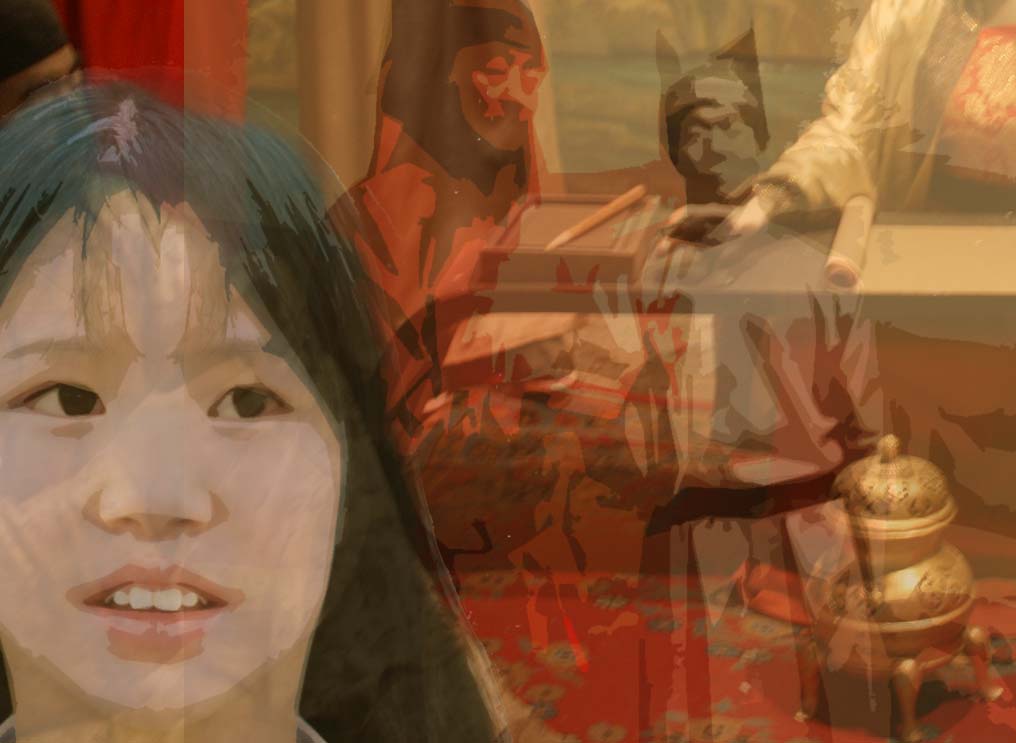THE VAST, VAST majority of people listed as leaders in human history have been men. But did you know that a woman once commanded the top superpower in the world? Yet her story has been forgotten.
Here at Fridayeveryday, we regularly celebrate amazing true stories from Asian culture, and particularly like to share tales which are not widely known outside this region.
So click here for a video telling of her story, or scroll down to read the tale yourself.
THE STORY OF WU ZETIAN
In China, Emperors sometimes had 100 concubines, or more. When the rulers died, the women were retired to Buddhist nunneries. It was considered improper for any other man to have relations with the wives of an emperor.
Now this story happens aay back in the year 649 AD, in the early part of the Tang Dynasty. An Emperor died and his wives were sent away. But his son went to the nunnery to see one of them.
Why? Because he had fallen madly in love with her. He took the retired concubine back to the palace.
How old was this retired lady?
She was 15. Her family name was Wu. As for her personal name, she was given a long list of special titles, so we will just use the name she is best known as, which is Wu Zetian, even though that title arrived later.
She had married the previous Emperor when she’d been 12 or 13; the normal age for marriage for most communities in those days. He had died about a year after she had joined the harem.

Wu Zetian’s new husband set aside his “official” wife and placed the former concubine in that position. This annoyed the officials of the court, but since he was the new Emperor, he could get away with bending the rules.
But he eventually became sick leaving her to make the decisions. So she was de facto leader of the country for many years.

When he died the next male in line was a child. In cases like this, the Chinese leadership system had built-in flexibility. It needed to. Men often died of illness or in battle when they were in their 20s or 30s, which meant that their eldest sons were literally just children. Often, the Emperor’s younger brother would take the throne until the eldest son was old enough. On other occasions, an uncle or someone else in the family would take over — whoever was close to the Emperor and had been working with him.
In this case, it was natural for Ms Wu became Emperor of China. This horrified the court officials, but what could they do?
Notice I didn’t say Empress, but I called her Emperor – she used the title Huangdi, the same as the male emperors. China does not have gender for nouns, like some languages.

China at that time was a world superpower – the country had the biggest population, a huge land mass, and the capital city, Chang’an, was by far the largest and most cosmopolitan city on the planet.
Wu Zetian laid the groundwork for China’s golden age, when so many people trekked to that city that the track itself became famous, known as the Silk Road.
She ruled till AD 705, and after she died (of old age), reports were circulated saying that she was a ruthless killer who murdered her rivals and her own child. There are a great many of these stories, painting her very negatively.
But as the centuries passed, many historians have come to believe that these stories were invented to stop other women becoming leaders. When we look at her rule, she seemed to manage well – the economy moved along steadily, and she made some interesting innovations, like pulling in people from around the country to help govern, thus diluting the strength of the embedded “old school” government apparatchiks.
So the jury is out on whether she was an evil murderess, or just a good leader who annoyed the government historians by failing to be the right sex.

There have been many TV shows and movies about her, some showing her as a villain, some as a hero, and some as a mixture of both.
If you would like a listing of the accusations against her and a discussion of which might be true, click here for a Smithsonian discussion on the topic.
But whichever side we take, we cannot avoid one key fact – she was arguably the first woman in the world to become leader of a superpower nation.
Today, of course, many women are in leadership positions, at all levels, and it’s worth remembering young Ms Wu who led the way, going all the way to the top.
Image at the top shows a diorama (waxwork scene) from th: Sui-Tang Gallery, Henan Provincial Museum, Zhengzhou. Picture by Gary Todd/ Flickr
For more stories of Chinese culture, click here.
